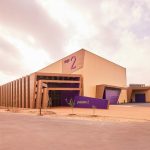Moving from hard-wired broadcast systems to network-based architectures with software-controllable topologies will bring a range of benefits to broadcasters, says Anthony Harrison As broadcast technology evolves, our demands on it become more complex, and this, in turn, drives the evolution of our systems to the next level. In the days when all television studios consisted […]
Moving from hard-wired broadcast systems to network-based architectures with software-controllable topologies will bring a range of benefits to broadcasters, says Anthony Harrison
As broadcast technology evolves, our demands on it become more complex, and this, in turn, drives the evolution of our systems to the next level.
In the days when all television studios consisted of cameras and microphones hard-wired into discrete hardware vision mixers, patchbays and audio mixing consoles which routed to a specific video tape machine, no one would ever have dreamt of trying to operate multi-studio broadcast systems, where the console in one studio might accept a mic signal from another, and output to a recording device in yet a third studio. Put simply, the wiring and patchbay headaches would have been insurmountable. But for broadcasters that have moved to networked AV systems, such workflows are increasingly commonplace. This, in turn, has powered the development of better networking protocols with more bandwidth and simpler, more easy-to-use control systems.
Whilst networking technology has been available to broadcasters for several years, it has taken time for networked AV systems to become widespread, and with good reason. For many years, such systems could be cumbersome to implement or too expensive, and the benefits they offered over hard-wired systems were difficult to justify.
Broadly speaking, the Middle East is one region where this view has held sway, and where fixed-topology broadcast architectures have continued to dominate, with the exception of several production facilities where networked systems are in use, such as those owned by twofour54 in Abu Dhabi. But networks have evolved a great deal in the last few years, and now have much more to offer forward-thinking broadcasters and production facilities.
Why Network?
The chief advantage of networking is flexibility. In broadcast audio, a hard-wired setup requires a separate, inviolable physical connection for each audio channel in the broadcast system, whether from a microphone, mixing console, or hard disk recorder. If a project requires the re-routing of that signal elsewhere, a new wire has to be connected to achieve that. In a simple broadcast studio, this might be a trivial concern, but in modern broadcast environments, which might include multiple timing-critical surround-sound feeds from an outside broadcast vehicle to a remote broadcast centre, it can be much more complicated. In a properly designed modern audio network, all of the hardware in the system is already connected, usually via affordable CAT5, CAT6 or fibre network cable, such that any input signal can be fed to any output, and the routing of a signal is software-controllable, easily remapped and re-routed with a few mouse clicks. As a result, it is just as easily achievable from a remote location as it is from on the spot.
In a modern networked system, such as those found at some major European and American broadcast centres, all of the audio hardware in the building is or can be connected to the broadcasters network or networks. Thus, any microphone in any studio can be routed to any mixing console, recorder or playout system. This flexibility is not simply a matter of making it easier to route incoming and outgoing signals it affords operators and studio managers more flexibility, and allows the creation of complex broadcast setups that would have been unthinkable a few years ago.
In a networked environment, if you have to move talent quickly from one studio to another, or need to press extra mixing hardware or processors into service quickly to sub-mix a complex LE or current affairs programme, you can patch in the required mixers, hardware or radio mics in seconds, without having to run extra cables or monitoring systems.
Generally speaking, fixed-topology systems now require more (and more expensive) cabling in comparison to networked systems. In outside broadcast, this means hard-wired solutions involve longer set-up times, have a higher propensity to technical failure, weigh more, and are less portable.
Concerns
Of course, whilst networking technology adds flexibility, it also introduces another layer of complexity. Older networking systems frequently introduced more unwanted
restrictions than the hard-wired systems they were supposed to replace.
Traditional IT networks designed to interface computers, printers and plotters in offices are not well-suited to the delivery of multi-channel, high-resolution audio in real time, and early efforts to adapt these protocols to carry audio resulted in networks with much higher latency than fixed-topology systems, prone to dropouts and loss of channel sync, or of sync to video.
However, in the last decade, low-latency proprietary networking protocols have been developed specifically for audio routing that work within the physical layer of standard Gigabit Ethernet technology, allowing connectivity via affordable CAT5 and CAT6 cabling and industry-standard fibre-optic connections.
Recent developments have also seen the early Unicast Ethernet-based systems develop into true one-to-many Multicast networks, whose capabilities go way beyond those of hard-wired audio systems.
In a fixed-topology or Unicast network, if you wish to route the output from (for example) a surround microphone to three different destinations, separate connections must be made between the surround microphones multi-channel output and all of the subsequent destinations, which can rapidly overload the network. In a Multicast network, any audio source connected to any point on the network can simultaneously address any other point on the network including all outputs at once if required.
Networks: The Future Of Audio?
Given that these improvements in network technology are recent, the slow historical take-up of networking technology is understandable. However, the advances of the last few years have created systems that look set to form the basis for the studios and broadcasters of the future.
It remains true that a poorly thought-out, badly specified broadcast network can perform worse than a well-designed hard-wired system but a properly thought-out, well-specified network can deliver better return on investment than a comparable fixed-topology system, and is better placed to meet the challenges of modern broadcast workflows.
Anthony Harrison joined Calrec in 2004, and has been its chief sales executive in the Middle East since mid-2010.















































































